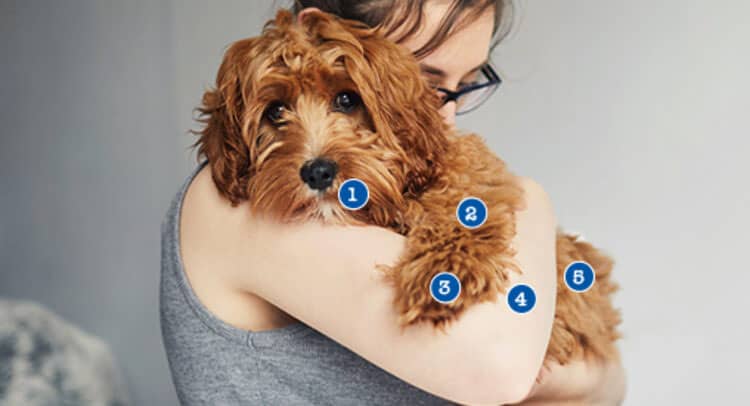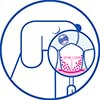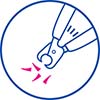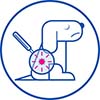
As you'll know, routine vet visits are crucial for checking your pet's overall health and wellbeing. Depending on the age of your dog, they usually happen once or twice a year. However as these appointment aren’t currently taking place, there are some quick and easy checks that you can do at home between these visits. These home checks can play an important role in detecting a condition before you've seen your vet, leading to an earlier diagnosis and treatment.
During current social distancing measures, Brian says “Remember, if your pet is ill and you need emergency treatment, or you need more medicine for your pet, please contact your veterinary practice remotely first as opposed to simply turning up. Most veterinary practices are running on very limited staff and whilst emergency care is still available, colleagues are doing all they can to distance themselves from potential contact with the COVID-19 virus.

1.Open wide
Checking your dog's teeth and mouth involves a lot more than just taking a quick glance at a few front teeth. You need to (carefully!) lift the lips and look at the side and back teeth. Gum recession is the main concern regarding canine dental health. When the tartare and plaque accumulates at the top of the crown of the tooth, it starts pushing the gum line back. If this gum line is ‘broken’, it cannot be reversed. Once the gum recedes, it loses grip on the tooth and that tooth will eventually be lost. If possible, it's also important to open your dog's mouth and look for any lumps, as these often get missed by just looking at the front teeth. Remember that it’s important to book in a dental check with your vet at least once a year to ensure dental cover.

2. Up to scratch
Depending on the breed, some dogs will need their claws clipped every three to four months, while others won’t need their claws clipped at all. However, it’s always worth monitoring your dog's claw growth to check that everything looks normal. The dew claws – or the 'thumbs' – need particular attention. These nails don’t make contact with the ground, so they’re more likely to grow long and curl. Checking is quick and simple: just gently pull back the fur on the paws and make sure you can see the end of each claw.

3. Lump it
Give your dog a full-body 'frisk' about once a month to check for any new or unusual lumps or bumps. When you’re feeling, imagine that your hands are covered in chalk and by the time you've finished, the dog should be completely white. Take your time to properly check and feel every part as lumps can be subtle and hard to find, such as under the muscles or in the armpit or groin. Eyes and ears always need a little bit more inspection, too. While lumps can be worrisome, you can never tell what one is just by feeling it – even your vet can't do that. Checks like this are crucial for discovering anything potentially abnormal so you can get it professionally checked out early. If a lump has been previously discovered by your vet, it's always good to monitor for changes in size and consistency.

4. Weighing up
Monitoring weight on a fairly regular basis is always a good idea. When it comes to size, owners often assume that a fluctuation in their dog's weight is due to a change in diet or exercise routine, but for anything more than 10% there could be a medical reason, such as a hormonal condition. If you have a smaller dog, you might be able to put him in a carrier and weigh him on your bathroom scales (subtract the individual weight of the carrier). If you’re struggling with checking your dog’s weight at home, pay a visit to your vet. Most practices encourage people to come in and weigh their dog without an appointment, and usually don't charge for this either.

5. Piece meal
Just as you would keep an eye on your child's eating and drinking habits, you should do the same for your dog. This is the number one everyday check. Look for any potential changes in appetite, or to thirst. Does your dog seem to be eating or drinking more or less than usual? Is food and water being taken in and passed out regularly? Changes in eating and drinking habits can be an early indicator for a variety of conditions – both diabetes and kidney disease can increase thirst levels, for example. This could be a sudden or incremental change, so monitor for both.
Click here for further advice on Caring for your pet during the Corona Virus outbreak.
Last Updated: 17/04/2020